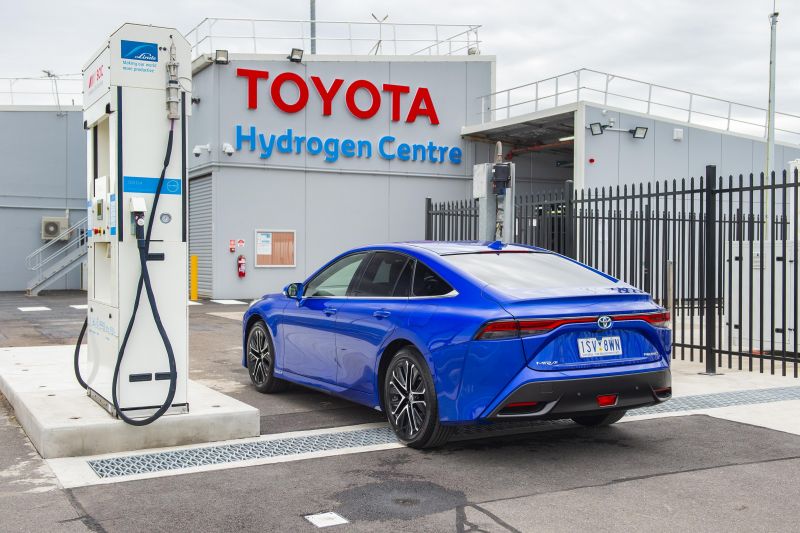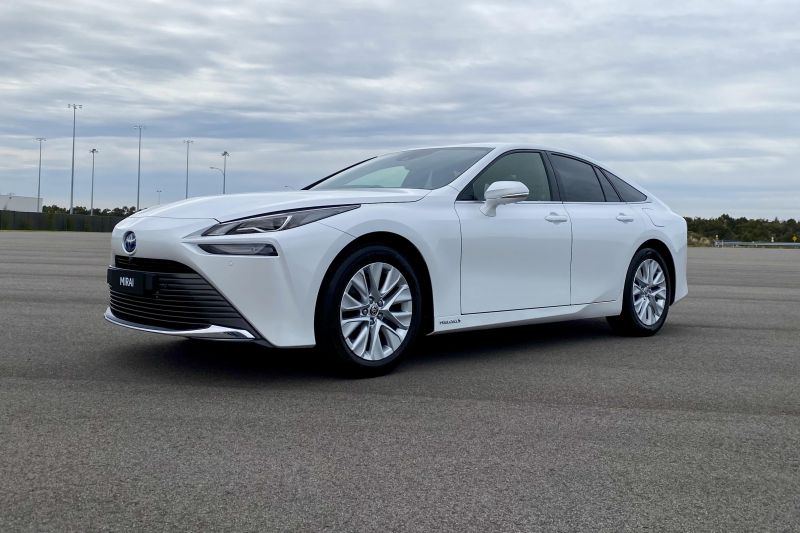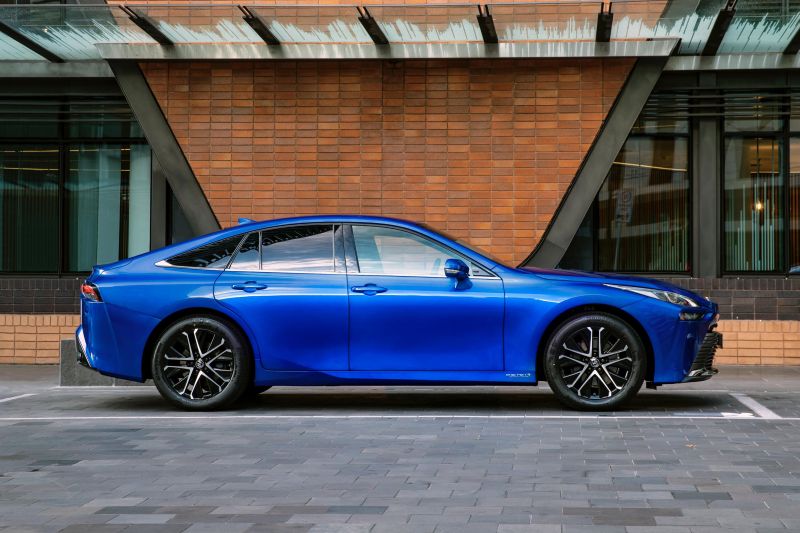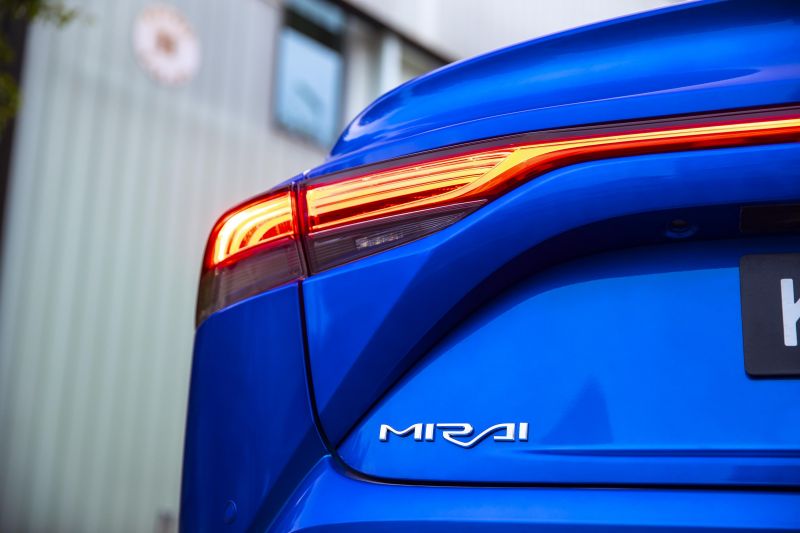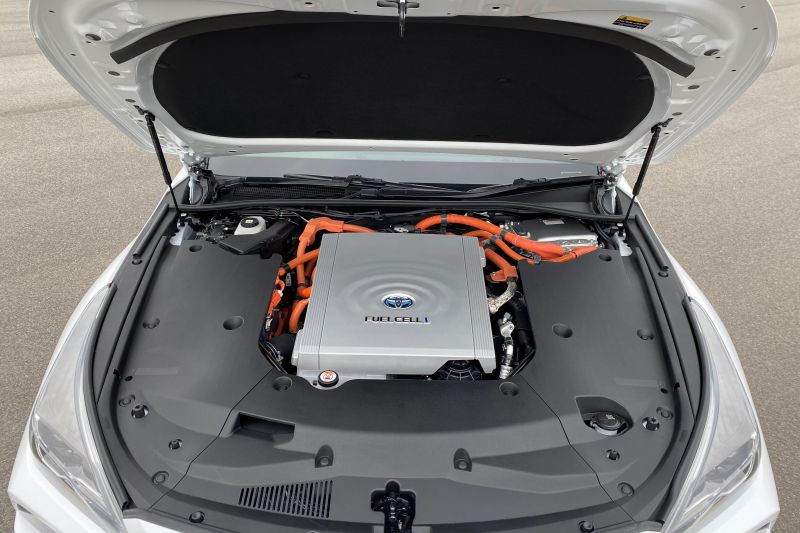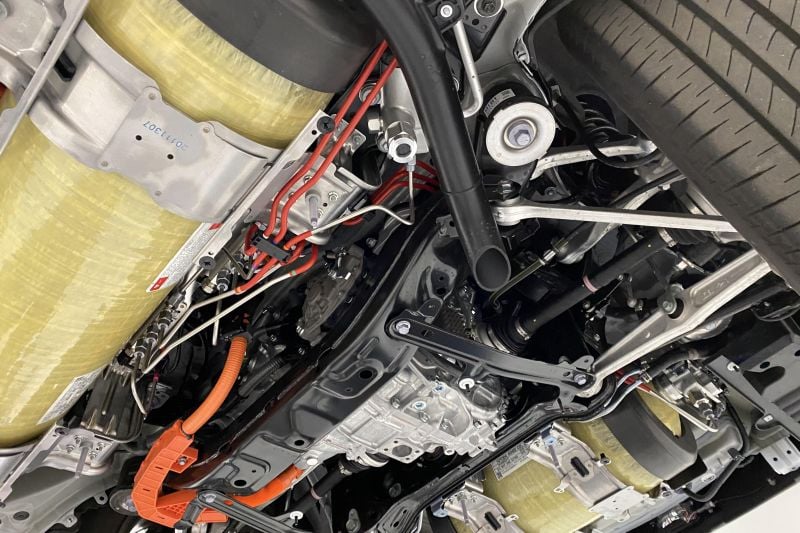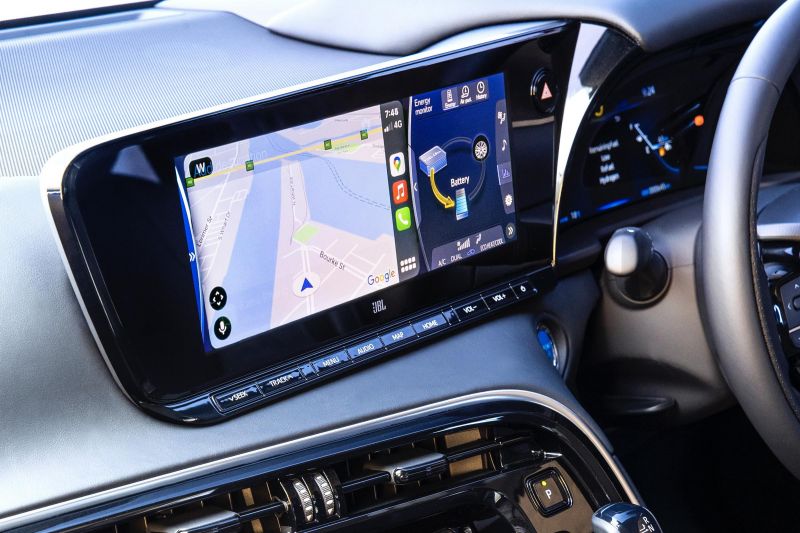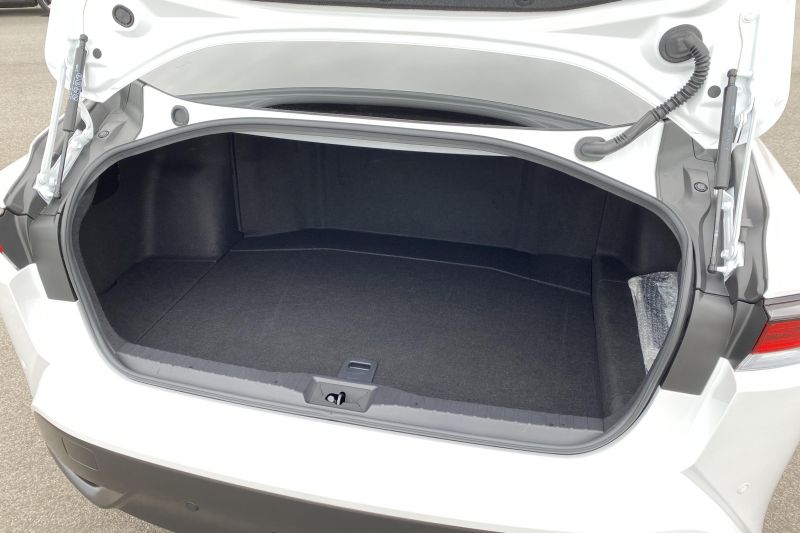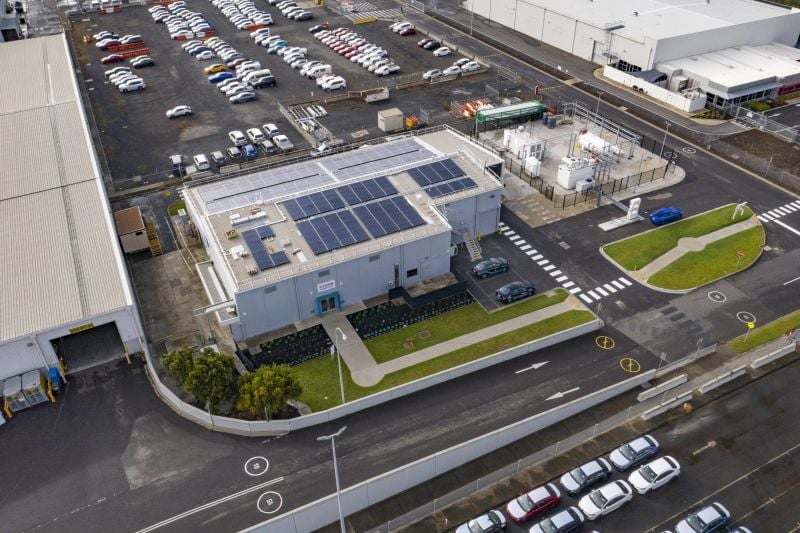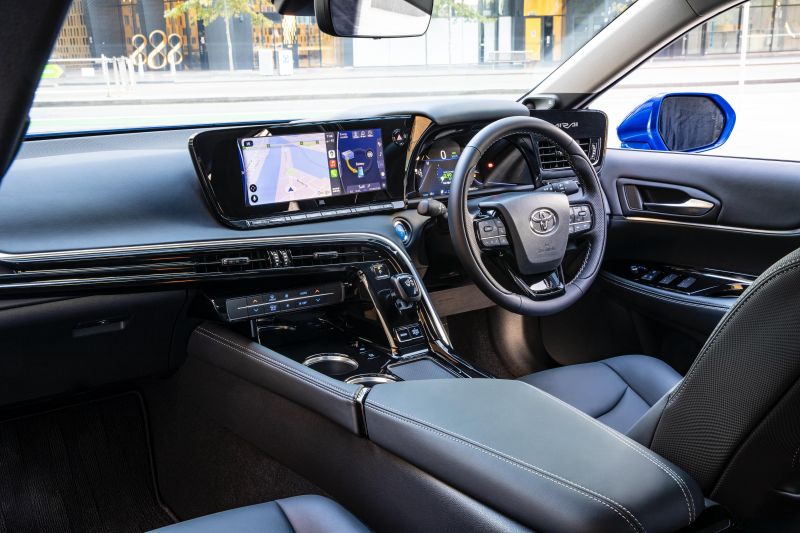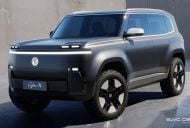Toyota Australia has announced a comprehensive lease program for its second-generation Mirai hydrogen fuel-cell electric vehicle (FCEV) as it prepares to scale up its zero-emission fleet beyond hybrids.
The first 20 Mirai FCEV sedans are now on the ground, destined for what Toyota calls “pioneering organisations and businesses” looking to decarbonise their fleets.
The company says it is in the process of finding these initial partners.
The Mirai lease program will cost $1750 per month on a three-year and 60,000km contract including the cost of hydrogen supplied from Toyota’s new refiller at its Altona Centre of Excellence in Melbourne’s west.
That’s a grand total for three years of $63,000, plus a further $2700 to cover servicing over the lease period.
Toyota has chosen to publish the cost of its Mirai lease program, unlike Hyundai which launched its Nexo FCEV a few weeks ago. Like Toyota, Hyundai has imported 20 units, all of which are to be used in the ACT government fleet.
Hydrogen FCEVs like these store pressurised hydrogen in chassis-mounted tanks and mix it with oxygen in a stack of membranes. The chemical reaction makes charge to spin the motor, and emits clean water and purified air as byproducts.
Toyota cites a circa 650km zero-CO2 driving range plus a 3-5 minute refill time, which is a key advantage over battery electric cars. The downside of course is the paucity of hydrogen refilling infrastructure compared to charging sites.
“This car represents the next step towards creating a hydrogen-powered future and realising Toyota’s global a goal of achieving zero-emissions mobility by 2050,” said TMCA vice-president of sales and marketing, Sean Hanley.
“Toyota believes that hydrogen-powered fuel-cell vehicles have enormous potential as the ultimate eco cars,” Mr Hanley said.
“As a fuel source, hydrogen is clean, safe and abundant, making up 70 per cent of the matter in the universe. It can be produced locally from various energy sources, including renewables.
“It enables a long driving range and quick refuelling, both of which are equivalent to petrol or diesel cars. And the only byproduct is water… These are among the benefits that will be experienced by forward-thinking business partners.”
Toyota Australia believes hydrogen FCEVs like this will be “readily available” in dealers to the general public within two to three years, and suggests the path to widespread acceptance will be far quicker than the 20 years it took Australia fully embrace hybrid cars.
Hybrid versions of the Toyota Corolla, RAV4 and Camry now greatly outsell non-hybrid versions.
Unlike companies including Tesla and Volkswagen which are highly critical of hydrogen, Toyota sees a future for FCEVs and BEVs alike, and wants “the market to decide” on the best options in the longer term.
Pricing
A monthly lease cost of $1750 for the car and hydrogen fuel, over a three-year term with a 60,000km distance limit.
Public sales are slated to commence around 2024.
Drivetrain
The Mirai’s chassis houses three carbon-fibre reinforced-plastic hydrogen storage tanks: two mounted transverse and one longitudinally down the centre tunnel.
The total storage potential is 141 litres or 5.6kg of hydrogen pressured to 700 bar.
The other components include a solid polymer electrolyte fuel-cell stack with 330 cells mounted under the bonnet alongside the air intake, compressor, electricity converter, cooling system, and power control unit.
Electricity created by the reaction between the hydrogen and atmospheric oxygen in the fuel-cell drives the motor, but reserves can also be fed into a hybrid-sized 1.2kW lithium-ion battery mounted behind the back seats.
Unlike the first-generation Mirai, this new one is rear-wheel drive.
The motor that’s mounted in the rear transaxle (alongside a single-speed direct-drive transmission and differential) produces 134kW of peak power and 300Nm of peak torque.
MORE: Our video review of the first-generation Toyota Mirai FCEV
The claimed 0-100km/h dash time is 9.2 seconds and the top speed 175km/h.
For some context, the almost Camry-sized Mirai weighs about 350kg more (1900kg kerb), and produces the same engine power as a four-cylinder version but 65Nm more torque.
Fuel Economy
The Mirai runs on compressed hydrogen gas, and can travel up to 650km (WLTP) using 141 litres or 5.6kg of H2. This means fuel economy of 0.7kg per 100km.
Public refill sites right now include one in Canberra linked to a wind farm, and Toyota’s own solar-powered site in Melbourne.
The CSIRO is working on one for Melbourne’s east, and there are projects underway across all states and territories bar the Northern Territory as of this moment.
The Federal Government sees hydrogen exports as a major economic driver.
Dimensions
The new Mirai measures 4975mm long, 1885mm wide, 1470mm tall, and sits on a 2920mm wheelbase. That’s 70mm longer and 45mm wider than a Camry.
One downside of having three hydrogen tanks and a drive unit at the rear between independent (multi-link) suspension is the subsequently small boot measuring 272 litres, or about half what a Camry stows.
Safety
The 2021 Toyota Mirai hasn’t been crash tested by Euro NCAP or ANCAP.
Atop seven airbags and ISOFIX or top-tether child seat anchors, standard safety features include:
- A 360-degree camera
- Autonomous emergency braking with pedestrians and cyclist detection
- Emergency steering assist
- All-speed active cruise control
- Active lane-keeping assist with lane-centring mode
- Traffic sign recognition
- Automatic high-beam
- Blind-spot monitoring
- Rear cross-traffic alert
Servicing and warranty
Toyota need to get its dealers trained-up in servicing FCEVs, but initial lease partners will need to return their Mirais to the company’s HQ.
Upfront costs for all servicing over the three-year lease are $2700, equal to $900 per annum.
Standard equipment
Exterior
- LED headlights, taillights and daytime running lights
- Rain-sensing windscreen wipers
- Auto-folding electric heated exterior mirrors
- Rear privacy glass
- 19-inch alloy wheels
- Tyre repair kit
Interior
- 8.0-inch digital instrument display
- Leather-wrapped steering wheel
- Synthetic leather upholstery
- Power-adjustable front seats
- Electro-chromatic rear-vision mirror
- Four USB power sockets
- 12.3-inch touchscreen display with satellite navigation, Apple CarPlay and Android Auto
- JBL 14-speaker audio system
- Bluetooth, AM/FM/DAB+ radio
- Dual-zone automatic air-conditioning
- Keyless proximity entry and start
Seven exterior colours: Arctic White, Tarmac Black, Liquid Metal, Feverish Red, Force Blue, Silver Rush and Dynamic Blue
MORE: Toyota showroom and data pages
MORE: All CarExpert hydrogen FCEV-related stories
MORE: Our video review of the first-generation Toyota Mirai FCEV





